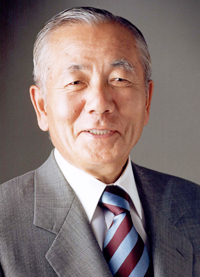The second The General’s Son starts off much as the first did. Our hero, Kim Do-han, is released from prison in the Mapo-gu district of Seoul by the short, mustachioed Korean detective who seems to have it out for him. The only difference between this and the last installment’s opening is that instead of being a poor kid living under a bridge, released with nothing and facing an uncertain future, now he is a gang boss and he is welcomed by his minions and the citizens of the neighborhood. He is adored by all, a foreshadowing of his successful later life in politics.
Whereas the original film indulged in delightful
world-building, guiding us through a gorgeous period set of the Mapo-gu
district and its myriad of colorful characters, the sequel jumps right into the
plot. Previously the focus was on
Kim Do-han’s rise but now he is already on top. The same gang conflicts arise here but while the action and
plot moves thick and fast, it seems deliberately contrived though never
complicated. Actually it could be
seen as somewhat prosaic, the story details lots of gang to-ing and fro-ing for
the sake of inserting ever escalating brawls. Make no mistake about it, The General’s Son 2 is primarily
about fisticuffs, which is both an asset and a hindrance.
Due to this fixation on sprawling fight scenes, a lot of the
film doesn’t make sense. The love
interests arise out of nowhere and are quickly forgotten about, and they are
briefly tacked back onto the narrative here and there to patch the plot
together. The unification of the
various Korean groups against the greater ill of the Japanese is all but gone,
and the main arc pitting Kim’s gang against the powerful Yakuzas adds no agency
to the narrative as it is just an expansion of the same sotryline from the
first film.
Some scenes add absolutely nothing to the narrative, for
example in one near the end of the film a young man pays for his meal and
leaves a bakery, he is then accosted by two of Kim’s goons who tell him to hand
over his cash. He refuses and one
of them punches him, he then skillfully beats them up, runs away, and never
appears again. It adds nothing to
the narrative and actually gives the impression that a new character has been
introduced. In the end the only
interesting thing about it is that the role is played by a very young Jung
Doo-hong who will be recognizable to Korean film aficionados as the famed stunt
director who has choreographed and starred in many of Ryoo Seung-wan’s films as
well as staging the martial arts for a number prominent Korean films in the
last 15 years.
Just as in the first, the loud sound effects in the fight
scenes are very distracting though with time you do get used to them. What bothered me more was the use of
soft focus on the woefully underwritten female characters, some of the
strangest and most inexplicable love interests I have come across in cinema. It seems that Kim Doo-han, as well as
being “Korea’s best fighter”, a patriot, and a local hero, was also quite the
ladies man, or so this series of films seems to suggest. The use of soft focus on the female characters is so
pronounced that it is nearly blinding.
This time around Im does not go to great lengths to add any
historical gravity to the film, instead he unabashedly crafts a straight martial
arts and gangster picture. Kim
Doo-han has already been established as the hero so after his exit from prison
Im purposefully refrains from using him in fight scenes since, as is often the
case with martial arts films, you have to work up to the big boss, even though
in this film he is the protagonist and not the antagonist. The fights start out with Kim’s small
entourage, who I don’t believe were in the first film, duking it out mano a
mano with low level aggressors before quickly all being involved in a brawl at
the same time. Then we expand from
the unit and the scale of the fights increases more or less exponentially. It’s perfectly preposterous and some of
the stunt work, such as a perfect somersault down a flight of stairs two beats
after a light knock to the shins, is hilarious, but the sheer enormity and fake
grandeur of these sequences are a lot of fun.
Many Korean filmmakers like to go all out. After seeing so many mass fights scenes
in Korean films, such as Attack the Gas Station (1999), Kick the Moon (2001),
and The City of Violence (2006), it’s good to know that the root for these can
in fact be traced back to older Korean films and not just Hong Kong action
pictures, though admittedly this film would have been inspired by them also.
Aesthetics resolutely win out in The General’s Son 2 and
narrative plays only a small part just like in Lee Myung-se’s stunning Duelist
(2005), though this is a far less ambitious project. In the end, see
this one for the fights, we got all the story we needed out of the first one.
See also:
The General's Son (1990)
The General's Son 3 (1992)
Reviews and features on Korean film appear regularly on Modern Korean Cinema. For film news, external reviews, and box office analysis, take a look at the Korean Box Office Update, Korean Cinema News and the Weekly Review Round-up, which appear weekly on Monday, Wednesday, and Friday mornings (GMT+1).
To keep up with the best in Korean film you can sign up to our RSS Feed, like us on Facebook, or follow us on Twitter.































